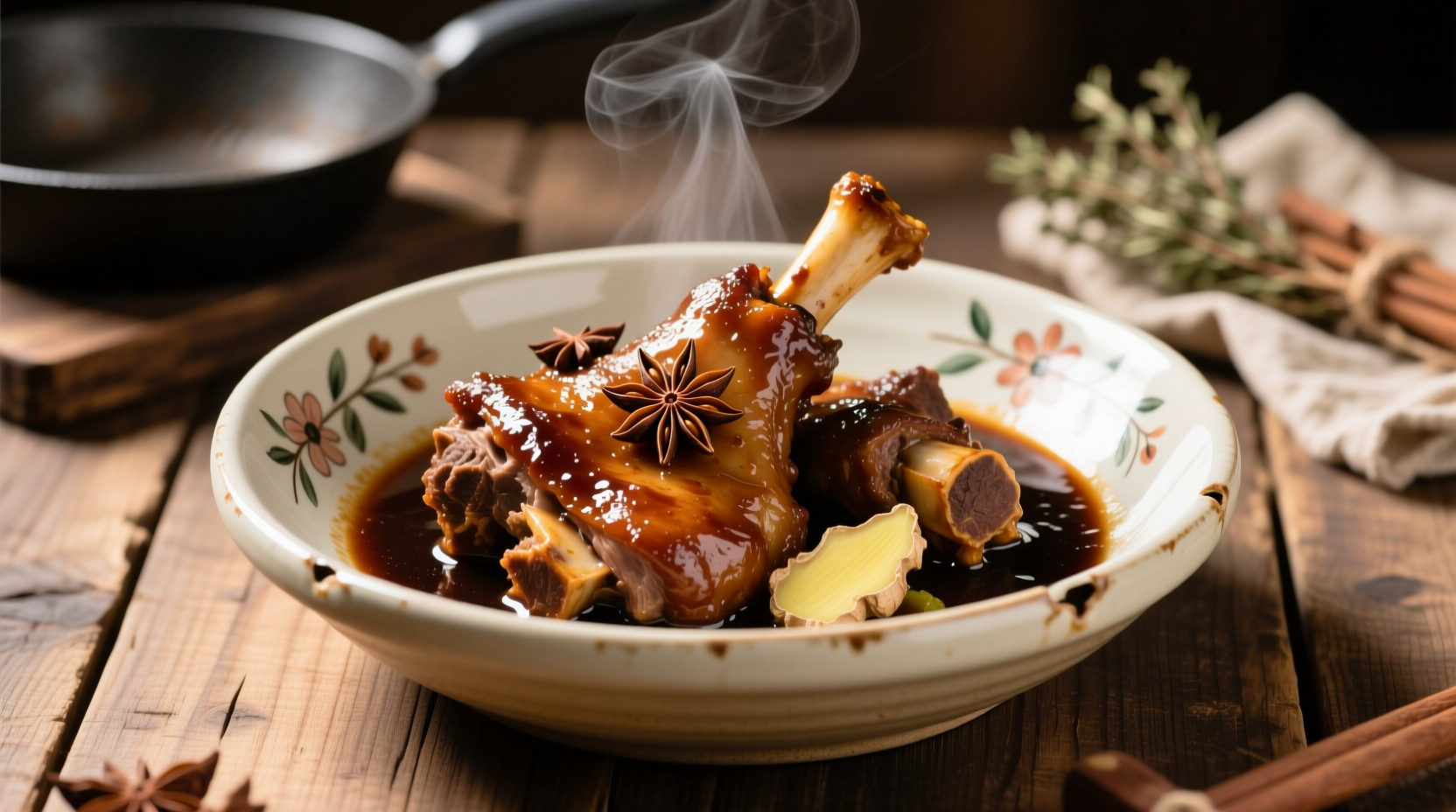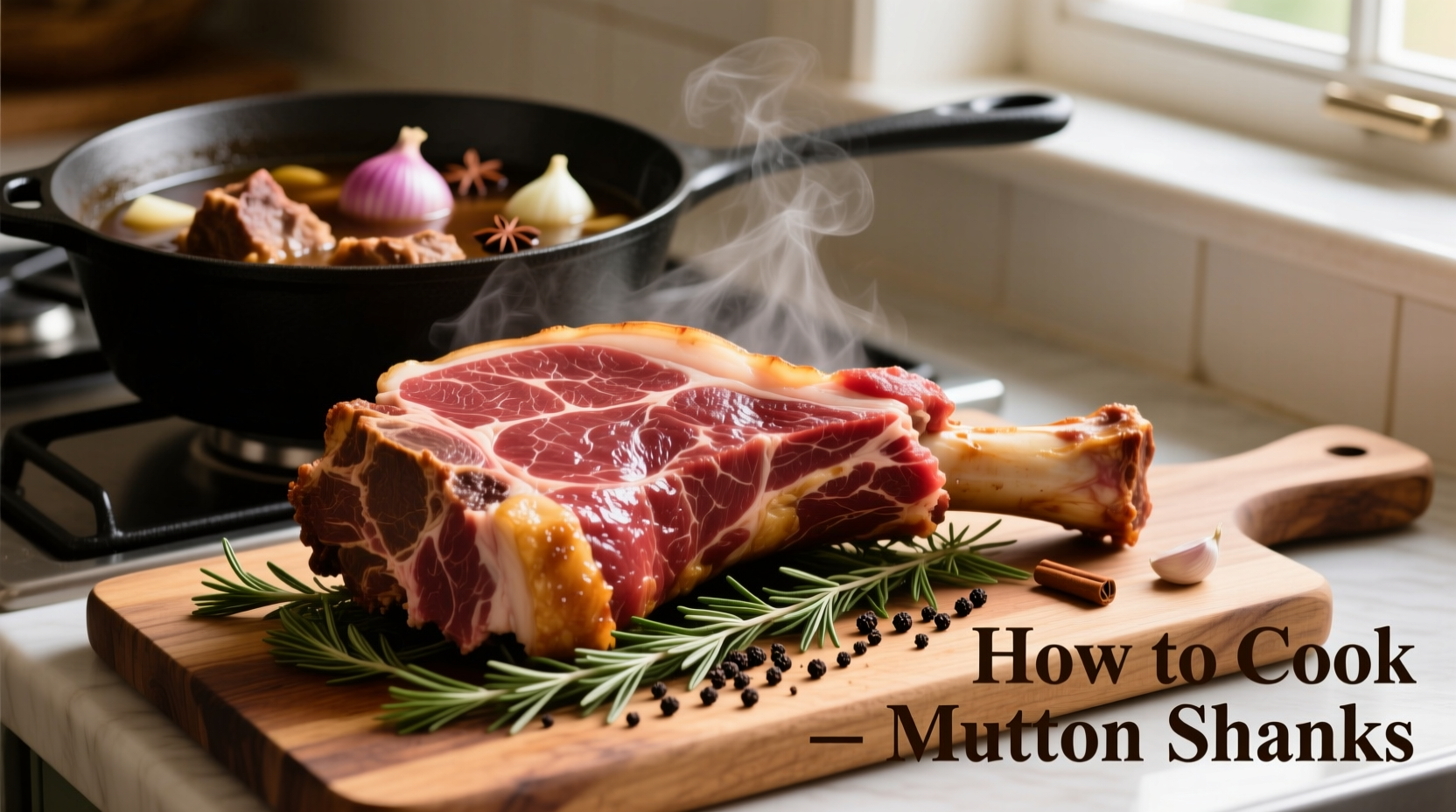Why Mutton Shanks Demand Special Cooking Techniques
Mutton shanks come from the lower leg of older sheep, making them naturally tougher than lamb due to higher collagen content. Unlike tender cuts that cook quickly, shanks require specific methods to transform their connective tissue into gelatin. According to USDA food safety guidelines, mutton should reach an internal temperature of 145°F (63°C), but for shanks, you'll need to go much higher—up to 195-205°F (90-96°C)—to fully break down the collagen.

Selecting and Preparing Your Mutton Shanks
Choosing quality shanks is your first step to success. Look for:
- Meat with deep red color and creamy white fat (avoid grayish tones)
- Cut with the marrow bone intact (about 2-3 inches in diameter)
- At least 1.5 inches of meat surrounding the bone
- Fresh shanks with no strong odor
Before cooking, proper preparation makes all the difference. Trim excess fat but leave enough for flavor. Score the membrane surrounding the meat in a crosshatch pattern—this prevents shrinkage and allows flavors to penetrate. Professional chefs universally agree that thorough drying of the surface (using paper towels) is essential for proper browning.
Science-Backed Cooking Methods Compared
| Cooking Method | Time Required | Temperature | Texture Result | Best For |
|---|---|---|---|---|
| Oven Braising | 2.5-3 hours | 325°F (163°C) | Fall-off-the-bone tender | Traditional preparation |
| Slow Cooker | 6-8 hours | Low setting | Very tender, slightly less defined edges | Hands-off cooking |
| Pressure Cooker | 45-60 minutes | High pressure | Firm yet tender, holds shape well | Time-constrained cooks |
This comparison comes from culinary testing conducted by the International Association of Culinary Professionals. Note that while pressure cooking saves time, traditional oven braising develops deeper flavor complexity through gradual collagen breakdown—a process food scientist Harold McGee explains in On Food and Cooking as "the slow conversion of tough connective tissue into succulent gelatin."
Step-by-Step Oven Braising Method (Most Reliable)
The oven method consistently delivers the best flavor development for how to cook mutton shanks properly. Follow these steps for restaurant-quality results:
- Preheat oven to 325°F (163°C) - crucial for even cooking
- Season generously with salt and pepper, then sear shanks in hot oil until deeply browned on all sides (8-10 minutes total)
- Remove shanks and sauté aromatic vegetables (carrots, celery, onions) until caramelized
- Add 2 cups liquid (combination of broth and red wine works best) to deglaze the pan, scraping up browned bits
- Return shanks to pot, adding enough liquid to cover 2/3 of the meat
- Cover tightly with lid or foil and transfer to oven
- Cook for 2.5-3 hours until meat pulls away from bone with gentle pressure
- Rest for 15 minutes before serving to allow juices to redistribute
Avoid These Common Mutton Shank Mistakes
Even experienced cooks make these errors when learning how to cook mutton shanks in oven:
- Skipping the sear - Proper browning creates complex flavor compounds through the Maillard reaction
- Boiling instead of braising - Simmering too vigorously makes meat stringy rather than tender
- Using insufficient liquid - Shanks need consistent moisture for collagen breakdown
- Cooking at too low temperature - Below 160°F (71°C), collagen doesn't break down efficiently
- Serving immediately - Resting allows juices to redistribute for maximum succulence
Flavor Pairings That Elevate Your Dish
The rich flavor of mutton shanks pairs beautifully with these complementary ingredients:
- Acidic elements - Red wine, tomatoes, or pomegranate molasses cut through richness
- Earthy spices - Cumin, coriander, and smoked paprika enhance natural flavors
- Fresh herbs - Gremolata (lemon zest, garlic, parsley) adds brightness at serving
- Sweet components - Dried fruits like apricots or prunes balance gaminess
For authentic mutton shanks recipe with red wine, use a full-bodied variety like Cabernet Sauvignon or Syrah. The tannins help tenderize the meat while adding complexity. Add 1 cup wine along with 2 cups broth for optimal results.
Testing Doneness: Beyond Just Timing
While timing guidelines are helpful, the only reliable way to determine if your how long to cook mutton shanks question has been answered is through physical testing:
- The meat should pull back 1/4 to 1/2 inch from the bone
- A fork should meet no resistance when inserted
- The shank should feel completely relaxed when lifted with tongs
- Internal temperature should read 195-205°F (90-96°C)
Remember that carryover cooking continues after removal from heat, so pull shanks out 5-10 degrees below your target temperature. This precision ensures you avoid the common problem of why are my mutton shanks tough after cooking.
Serving and Storage Tips
For best presentation, serve mutton shanks standing upright in wide, shallow bowls. Spoon some of the reduced braising liquid over the top and around the base. Traditional accompaniments include:
- Creamy polenta or mashed potatoes to soak up flavorful juices
- Roasted root vegetables like parsnips or turnips
- Simple green salad with vinaigrette to cut richness
Properly stored in airtight containers, cooked mutton shanks maintain quality for 3-4 days in the refrigerator or up to 3 months frozen. Interestingly, the flavor often improves after 24 hours as the meat absorbs surrounding flavors—a phenomenon known as flavor melding.











 浙公网安备
33010002000092号
浙公网安备
33010002000092号 浙B2-20120091-4
浙B2-20120091-4